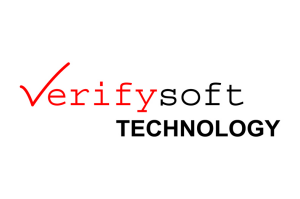Strategy, basics, partner choice
Making the journey to the cloud a success
The manufacturing industry is one of the top users of cloud computing. This is the conclusion of the study “Cloud and Cloud Managed Services in the manufacturing environment” commissioned by Rackspace Germany.
It was carried out by the market research company Pierre Audoin Consultants (PAC). 59 percent of the surveyed companies already use cloud solutions in the IoT environment. There are good reasons for this: for the majority of the companies, the flexibility, agility and scalability in operation (84 percent), the optimization of the Employee Experience or Customer Experience (84 percent) and the increase in cost efficiency (83 percent) speak in favour of cloud use. Most of the companies work with multi-cloud solutions that combine the best from the offerings of the particular cloud providers.
To ensure that the journey into the multi-cloud also runs smoothly, Rackspace and PAC have compiled four recommendations for action based on the findings of their study.
1. Define a multi-cloud strategy
82 percent of the interviewed companies use private cloud solutions at least in parts. Many other companies already use public cloud solutions from different providers and plan to expand them further. Above all, they simplify access to IT resources – and depending on requirements and scope, they can be flexibly designed. “The migration into the multi-cloud is not something you plan on a greenfield. In order to benefit sustainably from the advantages and act cost-effectively, companies should define a multi-cloud strategy,” says Wolfgang Schwab, Principal Consultant at PAC.
2. Create multi-cloud basics
Once the strategy has been defined, the basis for the cloud must be created. “At Rackspace, we see transformation as a process that we divide into recognizable and evaluable steps. A sustainable cloud concept includes planning, evaluation, development, migration, management and optimization,” explains Jens Puhle, Sales Director Germany at Rackspace. In the first step, companies should check their entire IT landscape and see which applications are actually economical. Today, CIOs should primarily optimize processes, reduce costs and ensure efficiency. Outdated IT infrastructures are no longer appropriate. IT transformation is also about cultural change: it requires a total redesign of the way IT influences and supports business processes. “Consider all areas of the company that are affected by the changes and identify decision-makers there,” advises Puhle.
3. Manage or have managed services correctly
Establishing and managing a comprehensive multi-cloud architecture requires expertise and experience. The multi-cloud connects existing infrastructures, platforms and software with various cloud models. Failsafe and efficient management is complex. That is why the majority of companies rely on external partners. This is reflected by the results of the Rackspace study: almost half of the interviewed companies are already working with an external service provider, 37 percent plan to do so in the next two years, and 18 percent are discussing this. Only a few companies can rely on appropriate internal manpower. A suitable managed service provider can offer the experience and knowledge of current cloud providers such as Amazon Web Service, Google Cloud Platform, OpenStack or Microsoft Azure. Another quality feature of external service providers is the service, which includes a personal consultant and a round-the-clock service. This has also been confirmed by the study results: Local contacts and local resources are important for 84 percent of small businesses and 74 percent of large companies.
4. Rely on experience
The selection of a product and a service provider is not always easy. One-fits-all will not work with cloud concepts. Use cases and best practices as well as the references of potential partners provide a good overview. According to the Rackspace study, 90 percent of the surveyed companies consider industry know-how to be very important. The same applies to 84 percent of the surveyed companies with regard to the corresponding certifications. The majority of the survey participants expect service providers to have many years of solid experience with managed services (52 percent). This is also confirmed by Gartner, ranking Rackspace as a leader in the “Magic Quadrant for Public Cloud Infrastructure Managed Service Provider Worldwide 2018” based on its many years of experience.
About the study
Especially manufacturing companies are challenged by digitalization and globalization to develop new business models in the IoT and Smart Factory environment. Therefore, many manufacturing companies are currently dealing with the topic of multi-cloud. The study “Multi-Cloud and Cloud Managed Services in the Manufacturing Environment”, conducted by Rackspace in cooperation with Pierre Audoin Consultants (PAC), highlights the distribution, use and challenges of the technology. From February to March 2018, a total of 120 IT and department managers from the manufacturing industry were surveyed.







